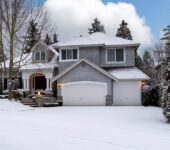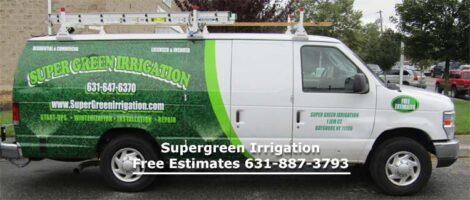
Posted On:
Category:
Why to Winterize your Irrigation Sprinkler System?
Why to Winterize your Irrigation Sprinkler System?
When spring is gone for good and a chill begins to encroach the air, you know that winter is inevitably on its way! And if you are familiar with the kind of damage winter does to outdoor equipment, you would not want to wait till it freezes your most priced assets, namely, your irrigation sprinkler system!
While your sprinklers keep the lawns and gardens green and watered throughout the summer easily, they do require a thorough preparatory routine to be turned off, once their seasonal purpose is served. A poorly maintained irrigation system can damage the pipes and cost you a fortune on the repairs later.
You can save yourself from paying a hefty cost on repairs by winterizing your irrigation sprinkler system today!
Why you should consider the winterization of your Sprinkler system?
The low winter temperatures can be harsh on sprinkler equipment if they are not well maintained and drained of all excess water beforehand. As it freezes, any leftover water can expand and cause significant damage to the sprinkler heads, pipes, and valves in the system. The sheer cost of the potential damage is certainly enough of a deterrent to make you take precautionary care before the winter arrives, if you haven’t already done so!
Winterization and de-winterization of your sprinklers systems can be done on your own if you have the experience and the required expertise. But if you are new to sprinkler systems, you can always seek the assistance of a professional winterization and irrigation equipment specialists.
How do I Winterize my Sprinklers?
If you are pretty hands-on with your equipment, you can winterize your sprinklers the D.I.Y way!
A few steps can help you prep your sprinklers before frost sets in:
The very step is to close off all the water supply to the pipes and pumps of your sprinklers and protect them with plastic covers or insulation tapes.
Once done, you can now shut down all programmed and automatic timers or controllers, if any. Switch them on to ‘Rain mode’.
Lastly, drain all excess leftover water and keep your valves, pipes, and sprinkler heads completely dry.
Once the procedure is complete, you can wait till next summer to de-winterize your sprinklers back to their full functionality.
Ways to Drain Your Sprinklers Effectively
Draining is an essential process of the winterization process. All the pipes, valves and pumps in all the zones of your irrigation sprinkler system must be thoroughly drained of all surplus water and kept completely dry before it is shut down for the winter.
There are three widely used methods to drain the water from the sprinklers:
Manual Draining
Automatic Draining
Air Blowout Method
All these methods ensure effective draining of water from your irrigation sprinkler systems and can be opted for depending on the type of system you have in place. Take a look and find out which one suits your system the best!
Manual Draining method
If your sprinkler system has manual drainage equipment, all that needs to be done to drain the water is to open the valves of each zone so the water inside drains away completely.
Once all the sprinkler heads, pipes, and backflow preventers are successfully drained, you can close all the valves to avoid further water entry into the system.
Automatic draining Method
With this method, the primary step is to shut off the main water supply and allow the pressure to subside while the water flows out of the system.
Ensure that all the sprinkler heads and the backflow valve are individually lifted and drained of any remaining water. Follow this process for all zones and close off all pipes to prevent rainwater from entering during the winter.
Air blowout method
This method is not one you should try without any guidance or supervision from a professional. The air blowout method blows out the moisture or water inside your system with the use of compressed air forced into the pipes and pumps. The force of the air within helps discharge and effectively drain off all the water and facilitate a dry system. This method needs to be followed in all the zones consistently for the desired results.
However, if you want to go the D.I.Y route, a good air compressor and a coupler may come in handy. This method of draining may not be advisable for all sorts of irrigation systems. It holds a risk of damaging your sprinkler system to an extensive degree. If the procedure is not performed with care, it could even lead to injury for the person involved.
Considering its technical difficulty and expertise required, we recommend you use a skilled and experienced professional to drain your pipes for you without any risks.








